the Fragile Wall:
a curtain of books that allows both a dignified distance from one person to another, and their bonding at a cultivated spiritual height. This urban veil is filled with books, plants, landscape framings and spatial pockets. The wall is immovable, but its metamorphosis occurs through transformable elements: from protective shells (at night) they grow into cantilevered chairs and porches (during the day). The Wall appears in places with a need of re-directions of pedestrian flows, enlivening of the neglected central territories with a hidden potential, and vertical enclosing between drastically different public areas.
the Vitrine-Table (refectory table):
a cultural dining plate (refectorium) that calls for communion, a place where a person goes to be restored (innerly reborn). This horizontal vitrine is made of a thin wooden plate, that contains in itself glass boxes in which rare books with antique value are exhibited. The plate (collective working surface) lies above few volumes (sculptures) composed by two parts: an exhibiting glass box (up) and a wooden chest/drawer (bellow), used for storage after the change of the exhibition. The volumes are transportable and they can come out of the table’s contours: when this happens, the plate lies upon vertical elements that follow the geometry of the (now extracted) volumes in fragments, and that receive/stabilize the return of the sculpture under the table. Once in a week / month, the exhibiting volumes are pulled out from under the table, creating an open air book-museum under the sky: it is the only period when they can be touched and read. The rest of the time, they are covered and locked under the glass-made horizontal windows in the table.
3. the Messenger Tower is the collecting element that contains both a Wall (an elevated low library) and a book-exhibiting Table. At the same time, it is a transportable vertical marker above wheels that announces the future cycles of cultural events in the city. When standing still and occupying a territory, it rises as a vertical extension of the horizontal street library, framing a reading room above ground. The reading zone (elevated platform) and the exhibition zone (passer-by level) are separated. The “roof” of the library is both an art-book exhibition table and a high reading bench. When the structure moves, the Tower “falls asleep”—it lies upon the platform, while the ramp is raised as a door that locks the volume completely.
This is a story about an unbuilt dream of three typologies of street libraries – a Curtain Wall, a Vitrine Table and a Messenger Tower, that were imagined to be moving through different neighborhoods in the city of Skopje.
What did the three creatures have in common? Where and why would they appear, and what would their presence reflect in the specific urban place?
Hemming was the word that emerged as a metaphor of the answer: sewing the urban edges. The creatures would appear at the urban border conditions: places with the need for a re-direction of the pedestrian flows, neglected territories with hidden potential, in-between lines dividing drastically different public areas (vertical enclosure, defensive attitude).
* The project was made as a competition entry in March 2018. The results were never announced.
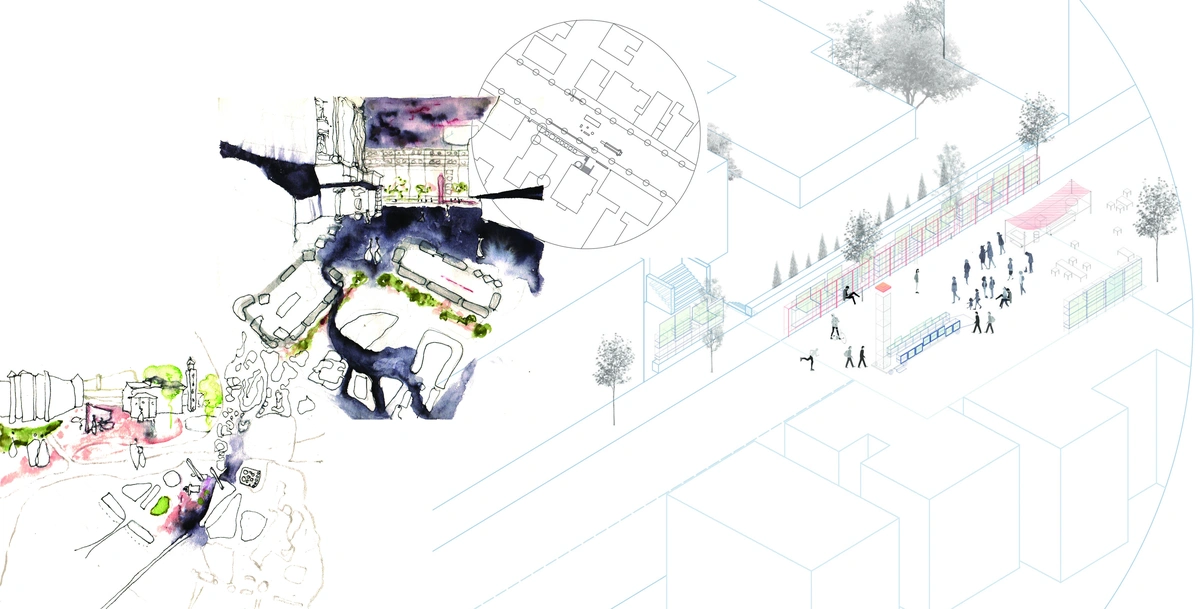
The urban theater: axonometric view of the three Street Library heroes: The Curtain Wall, The Vitrine Table and the Messenger Tower
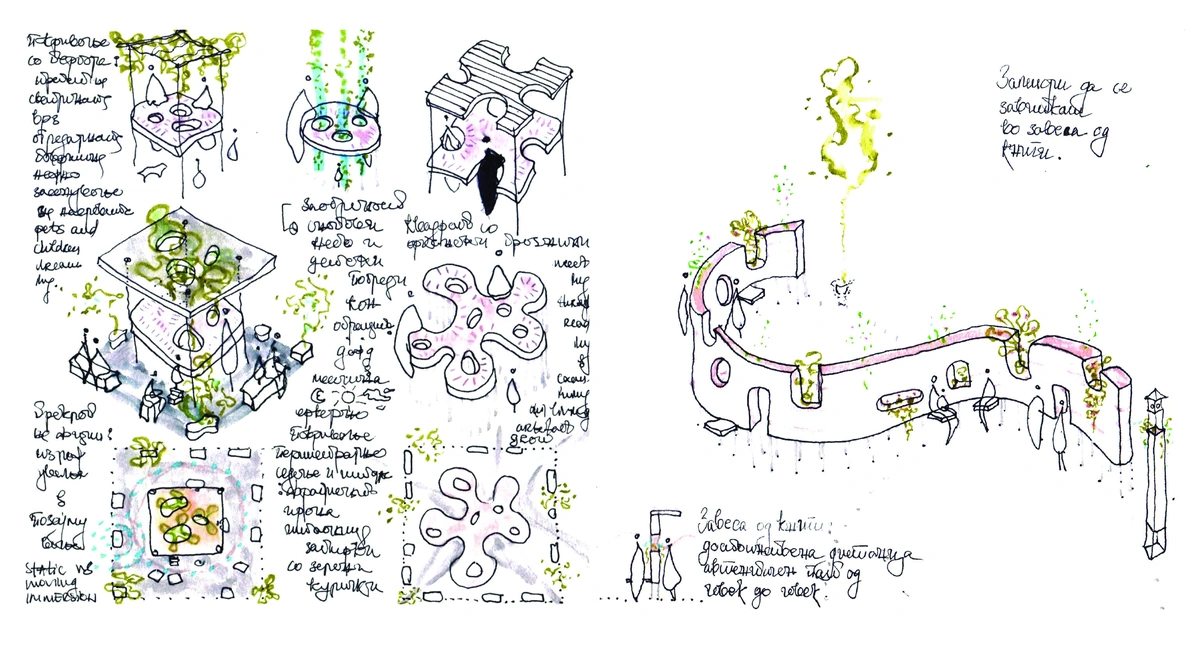
“Imagine yourself wrapped up by a curtain of books.”
How to actually wrap the curtain around our bodies without risking the safety in function? Is it possible to put the other two creatures into the same “structure,” and by doing this—to create an urban living room?
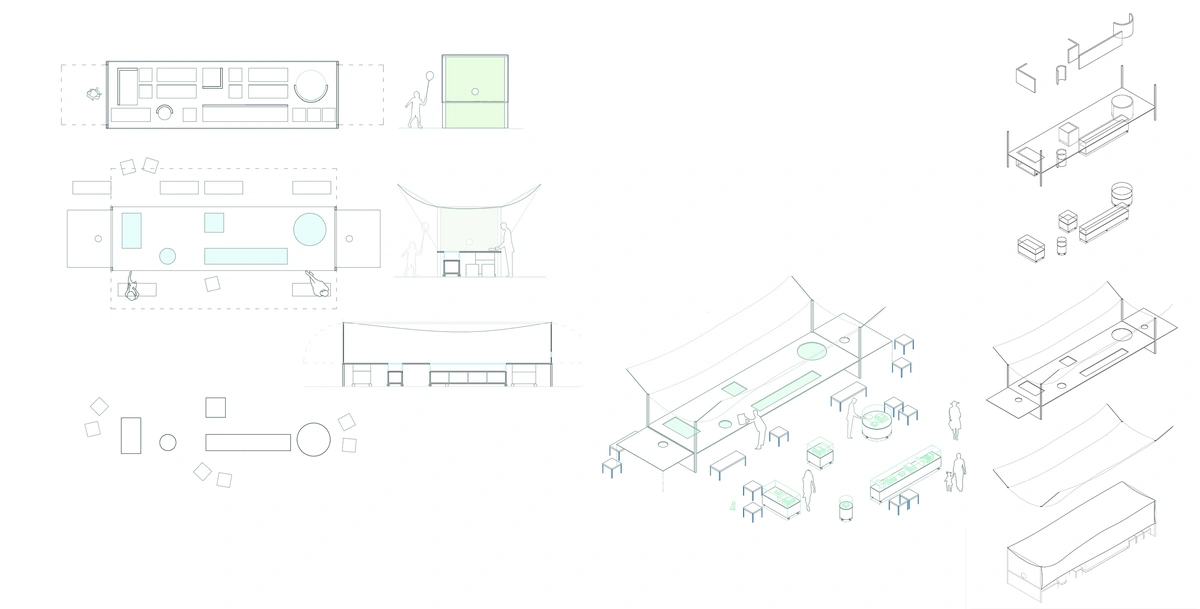
The Vitrine Table, as a knot of cultural gatherings in one neighborhood, addresses two spiritual needs of the citizens:
1. encountering through collaborative reading/writing/drawing;
2. exhibiting the rare books or the art books in a micro-museum placed in an open public space.
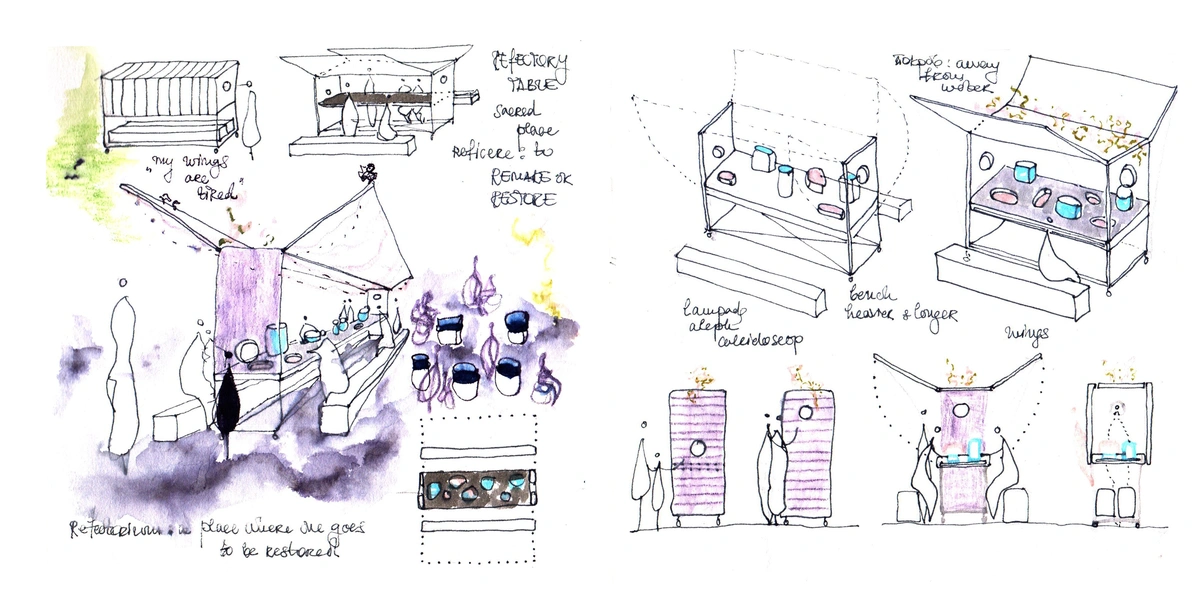
During the day, the table is covered with a waterproof flexible porch – fabric that transforms according to the flow of the wind; “wings” are extended on the left and on the right from the central cover; the lateral wooden walls transform into lateral tables. During the night, the table transforms into a cube that cover the chairs beneath; the wings transform into lateral curtains, the lateral tables rise back into lateral walls.
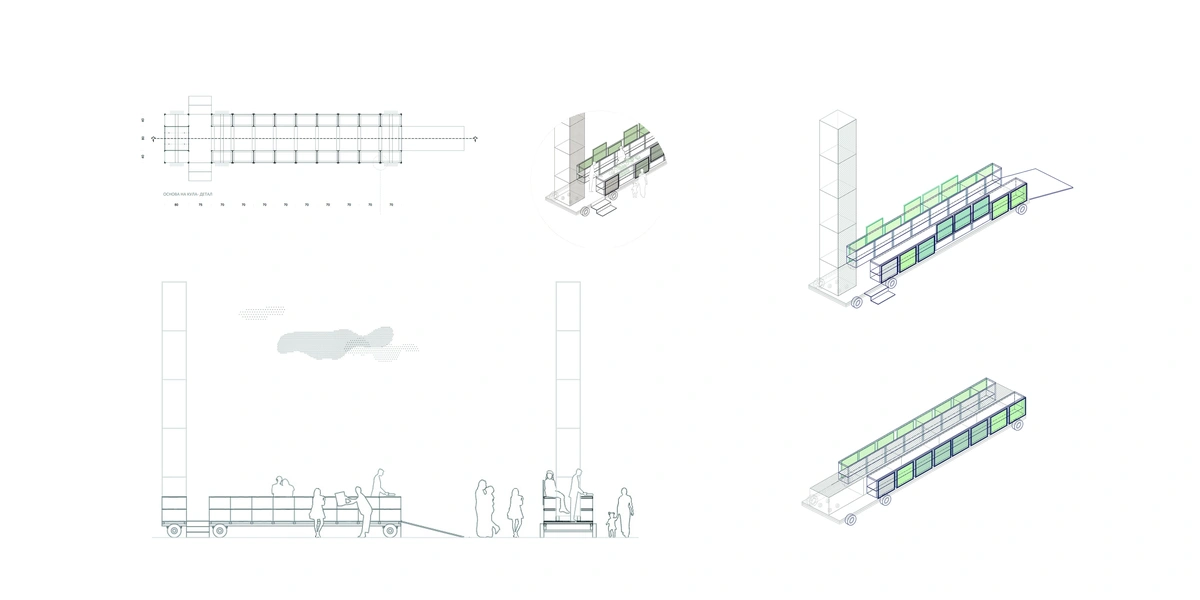
The Messanger Tower: transportable vertical marker above wheels that announces the future cycles of cultural events in the city. It contains a potential for changing the location once in a week of a month, according to the time-spatial needs of the urban culture. The Tower-Messanger can send voice signals for the flow of cultural happenings, as well as visual announcements of their monthly program.
Viktorija Bogdanova (PhD, MArch)
a poet and architect, devoted to making, sharing and co-creating poem-drawings as processual modalities in architectural and urban research through design.
Ilina Cvetkova (MArch)
an artist and architect specialized in adaptive reuse, preservation of industrial heritage and positive impact on users, communities, and local context.
Marija Dimitrievska (MArch)
an architect devoted to exploring methods in architecture and design that form a balanced coherence of contextual developments in terms of social, economic and aesthetical aspects.
Danica Spasevska (MArch)
an architect whose research and design approach explore problems of modern city conditions, revitalization of architectural memory through individual spatial experience and expression.
Milka Dokuzova (MArch, MPhil)
an architect and urban researcher, investigating shared (public) spaces in contested urban environments, aiming to inform and improve current design processes.